Lamb shoulder is a perfect example of a cut of meat that must be slow cooked. The reward for your patience is tender, flavoursome and succulent meat. It's always good! Slow-cooked lamb shoulder is an easy way to look like you've pulled out all the stops. All you did in reality is be prepared enough to get it in the oven early!
The oven does all the hard work while you concentrate on the sides, or the starter, or pouring the wine.
You don't even need to carve it once it's cooked! Unless you call pulling it apart with a couple of forks carving (I still get my husband to do this) 😉
One lamb shoulder goes a long way. You can easily feed six happy people.
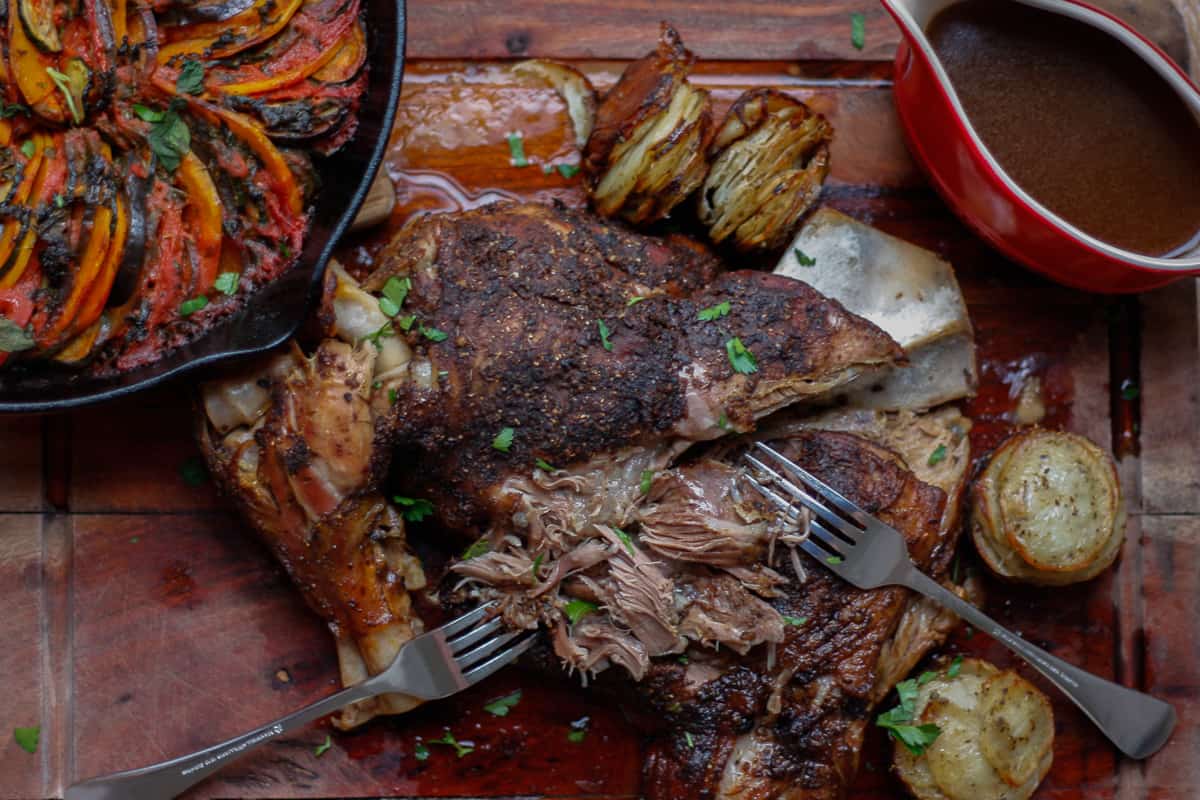
Jump to:
❓ Overview of Recipe
- marinade the meat with an aromatic paste.
- surround in liquid, cover well and cook in a low oven for around 5 hours until falling-apart tender (this is a braise).
- pour off juices to make gravy.
- return the meat, uncovered, for a quick blast in a very hot oven for the surface to crisp and brown.
- serve shredded meat with gravy - delicious!
🥩Golden Rules for Braising Meat
- Place the meat in a deep dish that has sides at least as tall as the meat when it's lying flat. We want to protect the meat from direct and uneven heat.
- The dish needs to be only big enough to hold the meat quite snug. We want to keep the liquid (and the steam it generates) close to the meat to cook it gently and completely.
- Make sure there's enough liquid to come about halfway up the thinnest part of the meat. The liquid can be made up of a combination of ingredients - stock, wine, vinegar. In this recipe we use plain water. The exact amount of liquid you use will depend on the dimensions of the pan and the joint. We don't want to cover the meat. We do need enough liquid to create gentle steam to cook it, for the whole of the cooking time. We can use this meat-infused liquid to make gravy later.
- Cover the meat with a layer of baking paper then foil to keep the steam inside. Secure this well to keep the steam inside (and the meat from drying out).
- Cook at low heat for a long time. You can use a slow cooker if you have one large enough to take the meat in a single layer. Otherwise, use an oven.
- Colour and crisp the outside by blasting uncovered meat briefly in a hot oven at the end of the braise*
*most of the time we do this browning step before the slow cook. I like doing it at the end for this recipe so that we get a crisp surface as well as browning. We lose the crispness if we do it at the start and then cover the meat.
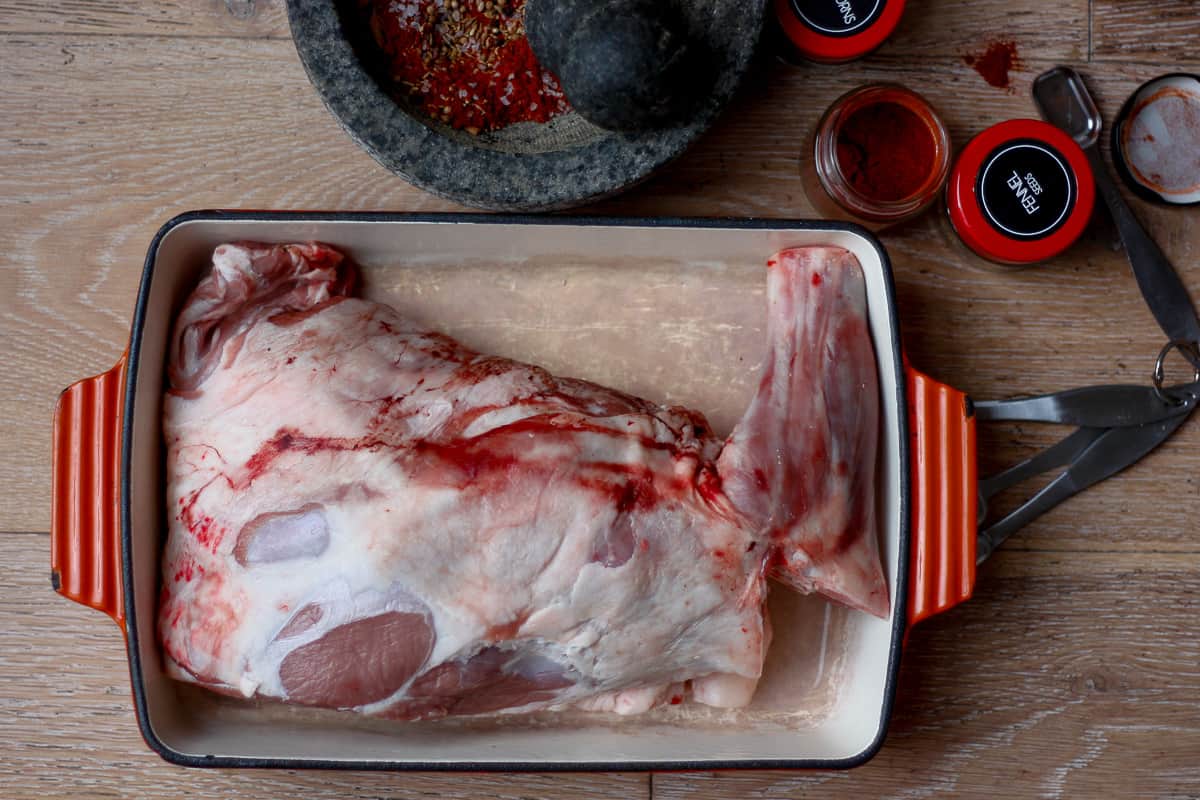
🥘 Ingredients
Lamb Shoulder - a whole one, on the bone.
Rock Salt - very coarse salt works well here to help grind the whole spices into a fine powder. I've given the weight as well as the volume (½ teaspoon). Use this weight if using any other type of salt.
Whole Spices (cumin seeds, coriander seeds, fennel seeds, peppercorns, cinnamon stick) - freshly toasting, then grinding gives us extra flavour and fragrance. If you only have ground spices, don't worry, just add these without toasting.
Olive Oil - we use a small amount to combine the dry spice and herb mix into a paste. This gives it 'smearability' and helps prevent it burning.
Cornflour (also called Cornstarch) - used to thicken the pan juices to make gravy. Cornflour has the advantage over plain flour to keep this dish gluten-free.
🔪 Instructions
We make lots of shallow cuts all over the surface of the meat (very satisfying!). We then rub our spice paste all over the top. Like really massage it in. We only do the top surface because our liquid surrounding the meat will be get very salty otherwise. Which means our gravy will be too salty. The meat loves the salt. Well, we love a salty crust anyway.
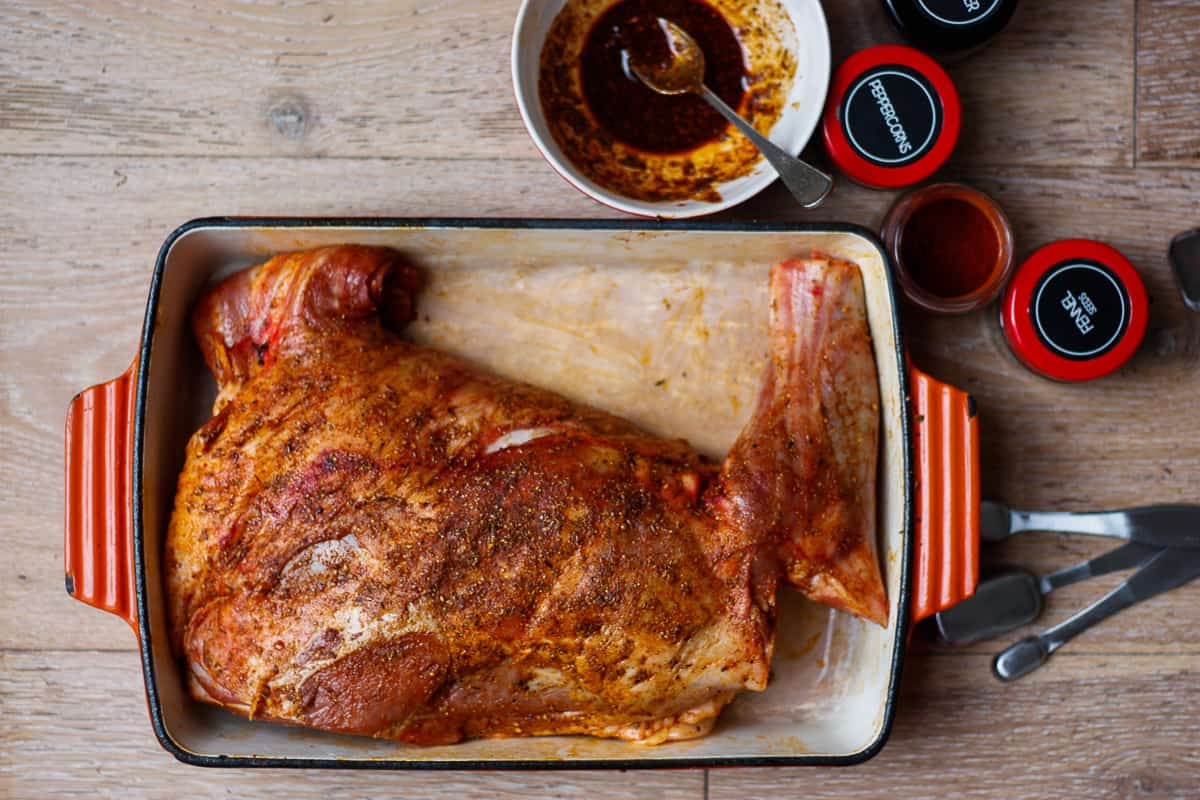
We cook the meat unfussed with for about 5 hours in a low oven. As long as you've covered it securely with baking paper and foil, you can be confident it won't dry out. We need to keep the steam inside. Unveil and prod it gently. It should yield easily. Once soft, remove the pan from the oven. Increase the oven temperature from a warm braising temperature to a hot browning one.
While the oven hots up for the last part of the cook when we want to achieve a browned, crispy crust to the meat, we get on with making our gravy. We pour off the juices surrounding the meat (carefully!) into a clear heatproof jug and transfer this the fridge to cool. The fat in the liquid will form a layer at the top so that we can remove it. As much as fat = flavour, most of us would agree that greasy mouthfeel in a gravy is not pleasant. It will be easiest to remove the fat from the pan juices if:
- the juices are in a thin layer (choose a wider bowl) so that they cool quicker.
- you get the pan juices chilling ASAP.
- you can transfer to the freezer to cool faster (I never have space for this!)
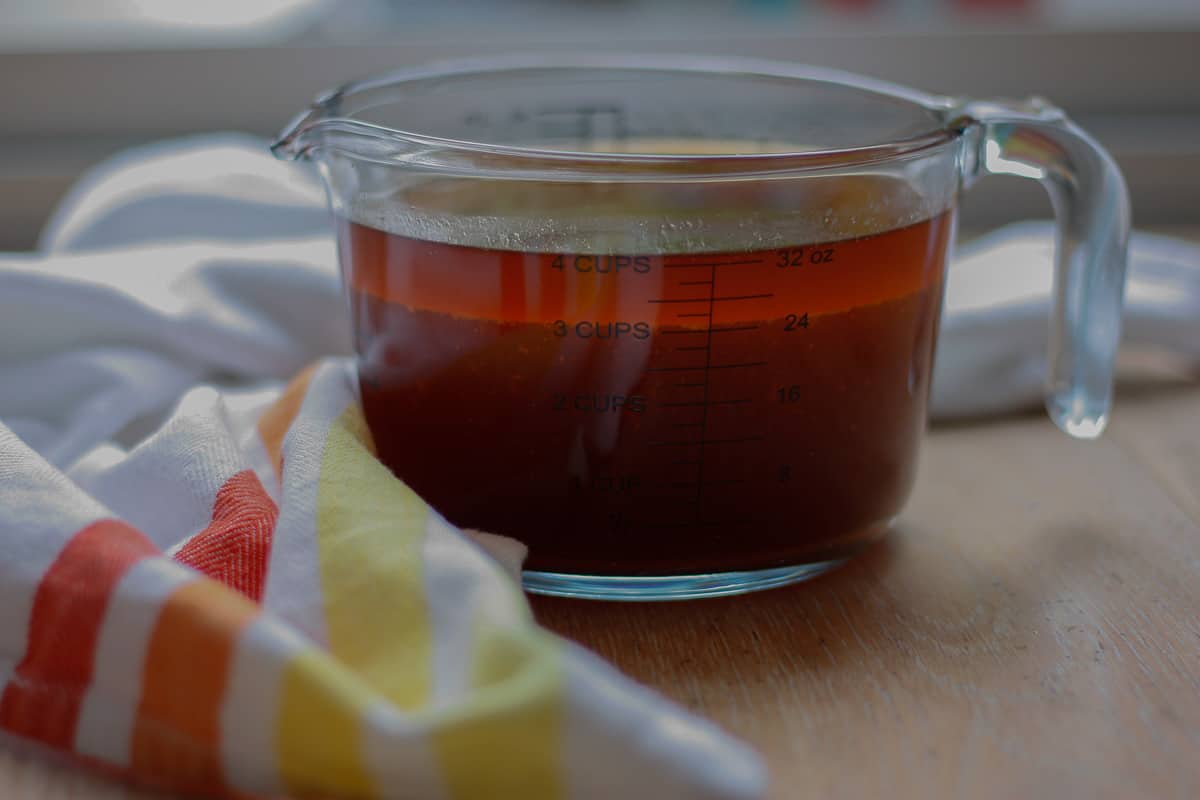
We can use the time taken to brown the meat at the end to make our gravy. Once the meat has browned we get fond (fancy term for pan drippings). These are the crusty, stuck-on caramelised bits that the meat leaves in the pan. We add this to our gravy to make it even more delicious.
Slow-cooked meats don't need to rest. They do hold their heat for a long time though, handy if you need extra time to bring the rest of the meal together. Keep the meat tightly covered if keeping warm after braise. Keep it loosely covered after the blast (to help keep the surface crisp).
The accompaniments for slow-cooked lamb shoulder are limitless - try a Ratatouille Tian, Roasted Potato Stacks, or Eggplant Parmigiana. A crisp green salad is always a good idea to balance the richness.
If you love slow-cooked meat (my favourite way to eat meat), try this beef cheek recipe or a maple and orange-glazed lamb shank braise.
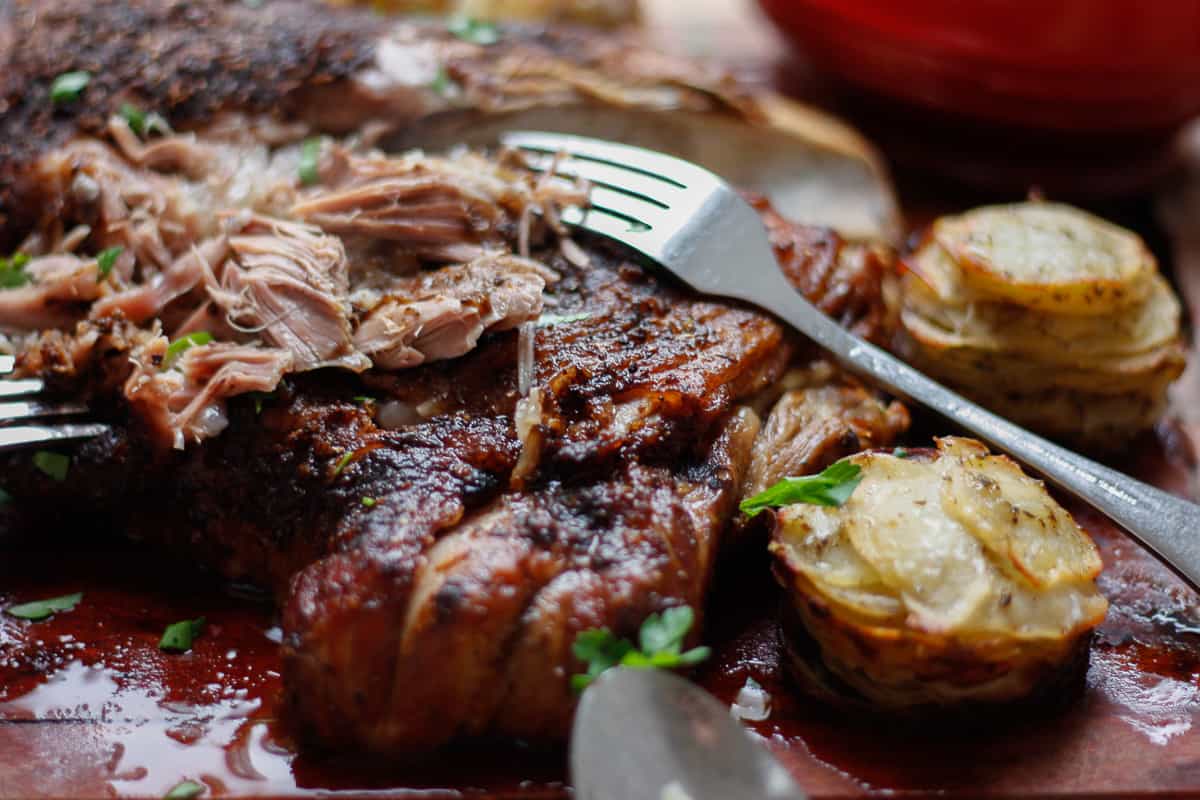
📖 Recipe
Equipment
- Baking dish, large enough to take the whole lamb shoulder with a snug fit. Something with a lip will make it easier to secure the foil.
- Extra-wide foil handy for covering the meat. You can overlap two standard sheets of foil to make it large enough if you don't have extra wide.
Ingredients
- lamb shoulder on the bone
Marinade
- teaspoon whole cumin seeds (note)
- teaspoon whole coriander seeds
- teaspoon whole fennel seeds
- 1 cinnamon stick
- teaspoon whole black peppercorns
- pinch cayenne pepper/chilli powder
- 2 teaspoons sweet smoked paprika
- leaves from two rosemary sprigs
- ½ teaspoon rock salt, (or 4g of any type of salt)
- 2 Tablespoons olive oil
- about 600ml cold water
Gravy
- Pan juices
- 2 Tablespoons cornflour
- 4 Tablespoons cold water
Instructions
Marinade
- Toast Whole Spices -preheat a dry (unoiled) frying pan over low-medium heat. Add the whole spices. Toast, moving around often until fragrant and a touch darkened. This will only take a minute or so.teaspoon whole cumin seedsteaspoon whole coriander seedsteaspoon whole fennel seeds1 cinnamon stickteaspoon whole black peppercorns
- Grind Spices - transfer the toasted spices to a spice grinder/mini food processor. Add the other spices and salt. Grind to a fine powder.pinch cayenne pepper/chilli powder2 teaspoons sweet smoked paprikaleaves from two rosemary sprigs½ teaspoon rock salt, (or 4g of any type of salt)
- Oil - transfer the ground spice mix to a small bowl. Add the oil and stir through to make a paste.2 Tablespoons olive oil
- Marinade Meat - place the meat in the baking dish. Make deep cuts with a sharp knife all over the top of the meat (through the fat layer and into the meat below). Rub the spice paste all over the top of the meat and work into the cuts with your hands. At this point you can put the meat in the fridge (uncovered) for up to 2 days or proceed to cook.lamb shoulder
On the Day of Serving (around six hours before serving)
- Preheat Oven - to 120 °C. Remove the meat from the fridge if you haven't already.
- Water - pour water around the meat (not over the top), enough to come about halfway up the thinnest part of the lamb.about 600ml cold water
- Cover - the meat with a layer of baking paper and then a layer of foil. Allow some space for 'tenting' over the meat, but secure tightly around the rim of the baking dish.
- Braise - cook the meat for 5 hours. Try not to check on it in-between. Remove from the oven and check for doneness. The meat should yield easily when prodded gently. If not quite there yet, re-cover securely. Cook for another 30 minutes before you recheck. Once done, remove the meat from the oven.
- Increase Oven Temperature - to 220 °C. With care, pour the pan juices into a heat-resistant glass container. You might need an extra pair of hands to do this with ease. Transfer the pan juices to the fridge. We want the fat to cool and rise to the top. We want to remove this and use the rest of the pan juices to make our gravy.
- Brown Meat - when the oven is up to temperature, uncover the meat. Reserve the covers for later. Return (uncovered) to the oven. Roast the lamb for 15 minutes, until browned and crisp on the surface. With care, lift the meat out into a plate/dish. Don't throw the baking dish in the sink! We going to use the stuck-on bits of flavour in the bottom of the pan (fond) to add flavour to the gravy.
- Cornflour 'Slurry' - whisk the cornflour into the water until smooth.2 Tablespoons cornflour4 Tablespoons cold water
- Make Gravy - remove and discard the fat layer from the top of the pan juices by spooning it off. Pour the rest into a frying pan/large saucepan and bring to a boil over medium-high heat. Add a little of the hot liquid to the stuck on bits in the lamb pan. Use a flat-ended wooden spatula to scrape and loosen everything. Pour everything into the gravy saucepan. Whisk in the cornflour slurry. Reduce until thick enough for your liking, stirring every so often. If you want to thicken the gravy further, repeat step 11. Strain and pour into a gravy jug for serving.Pan juices
- Shred - using tongs or a couple of forks, roughly shred the meat. You might want to remove and discard any large sections of 'jellified' fat as you do this.

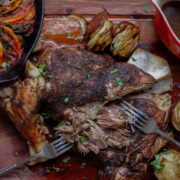

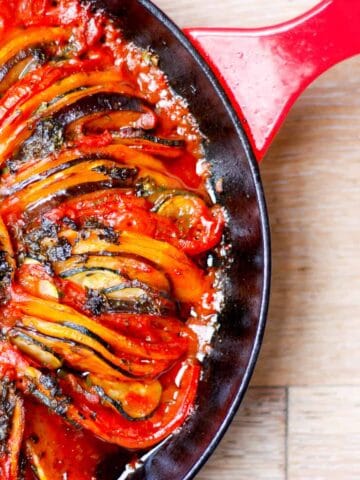
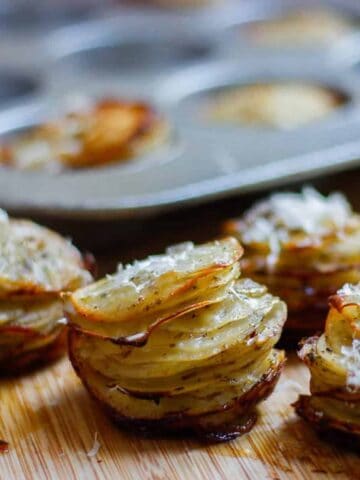

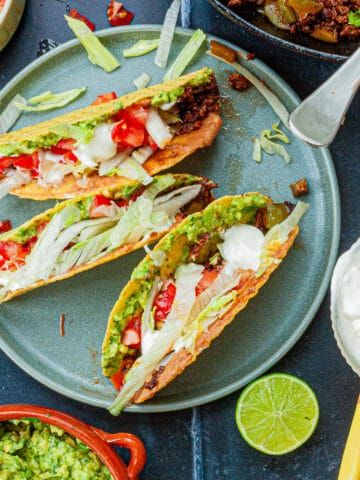
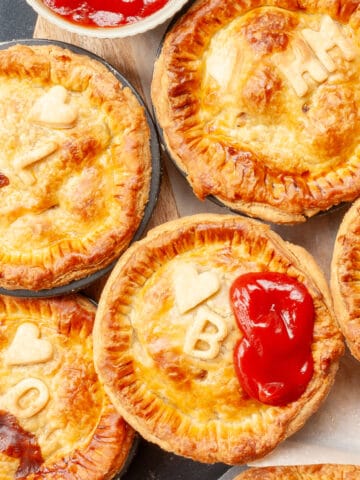

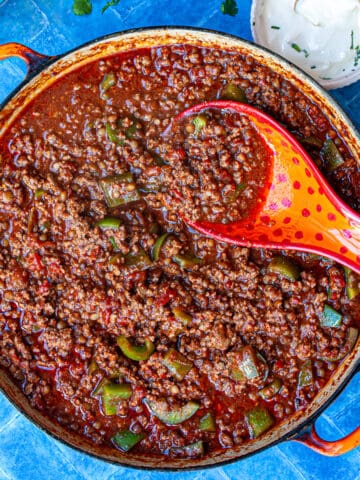
Comments